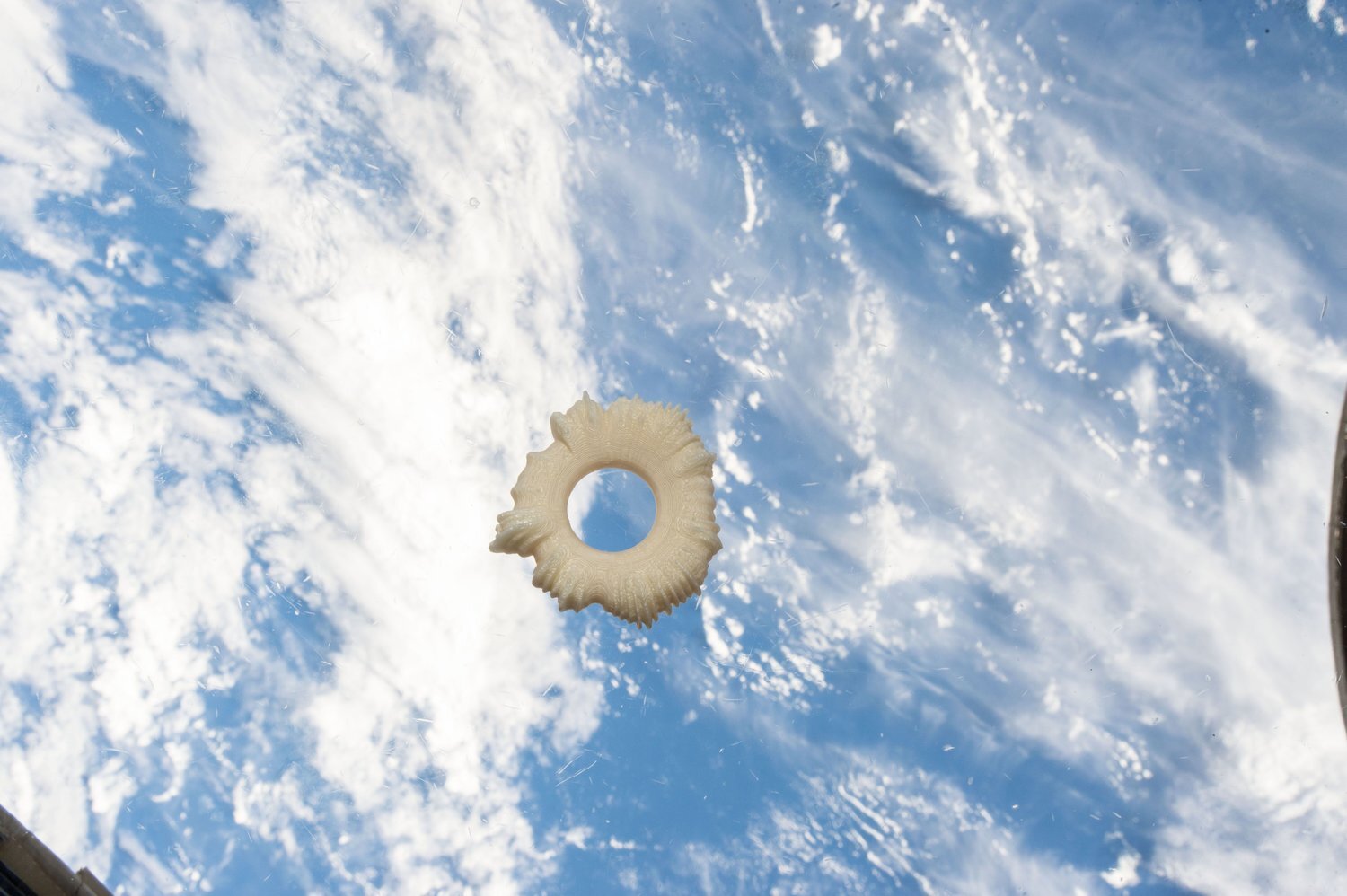UNCANNY STATE | Eyal Gever
Sept 5th - Nov 1st, 2019
© Eyal Gever
In his latest exhibition Uncanny State: Notion of Acceptance, Eyal Gever presents six newly created metaphysical representations of human movement, performed by internationally acclaimed contemporary dancer and choreographer Sharon Eyal to the music of world renowned contemporary pianist and composer Rosey Chan.
Through a variety of ways, these artworks explore the dynamic, complex and ever-changing relationships between man, nature and technology. By blurring the lines between dance and visual arts, Gever in turn blurs the lines between organic and non-organic, considering our current and future identity as biological humans in the growing age of artificial intelligence and digital consciousness. Humankind is heading so fast into the era of biotechnical innovations on the human condition, heralding perhaps the beginning of a new bionic, or even cybernetic form of humankind. Therefore, these digital sculptures serve as an uncanny reminder of where we came from, with each dancer representing one of the six elements of nature:
Water
Fire
Air
Earth
Aether
Vibration
These moving images all function within a modestly pixelated realm which uses low resolution LED screens. Contrary to the high resolution, oversaturated world in which
we usually operate in, the finer details of the highly sophisticated simulations have been stripped away. Gever consciously chose this elementary medium as removes all visual distractions and forces the viewer to focus on the movement itself - the shapes, shadows and silhouettes - encouraging the viewer to go beyond what they ‘see’, and encounter what they ‘feel’.
As such, the dancers are characterised by their form and abstractions. This transforms these metaphysical bodies into disembodied, assexual creatures free from features or expression, much like the dancers in Henri Matisse’s famous Dance painting in which he reduced their bodies to mere geometric curves. In doing so, Gever has reduced dance to its purest form, emphasising the fluidity of movement; fluidity of gender; fluidity of elements; fluidity of existence; and ultimately the growing fluidity between man, nature and technology.
This idea of stripping back to the fundamental components is also reflected in the digital renderings themselves. Each dancer is made up of 3D particle simulations of the six most important chemical elements whose different combinations make up almost all the biological molecules on Earth, reminding us of the very foundations from which we are all created:
Nitrogen
Carbon
Sulfur
Oxygen
Hydrogen
Phosphorus
The corporeal form of the dancers is in a continuous state of flux between emergence and disintegration; expansion and contraction; growth and decay; creation and destruction, pertaining to our inner conflicts of identity. Moreover, these binary states of existence reflect the current instability of the world in which we find ourselves, and this is only heightened by the tension created by the juxtaposition of classical music with very futuristic visuals, referencing both our past and our unpredictable future.
The calmer the dancer’s movements, the more defined their silhouette is; whilst the more dynamic the dancer’s movements, the more rapidly their body disintegrates. These metaphysical bodies are constantly on the brink of dissolving, vanishing into thin air, much like many of the Earth’s species on the brink of extinction. As such, the dancer’s very existence is something not to be taken for granted, and as we consider
our own existence and the future of humanity, Gever invites us to challenge our predefined ‘notions of acceptance’, encouraging us to pause, reflect, and rethink our very own personal dance routines that we call life.
________ ______ ____ _____ ______ ________ Uncanny State: Notion of Acceptance is the culmination of years of research and international exposure. Each dancer took over a year to develop, throughout which Gever meticulously examined the data captured from Sharon Eyal’s dance movements, investigating the distribution and representation of energy, vibrations, metaphysical simulations - both virtually and in reality.
Water Dancer was the first piece Gever created from this series, with its debut in 2015 at the Lichtsicht 5, Projection Biennale curated by internationally acclaimed Peter Weibel, Director of the ZKM Center for Art and Media. Just earlier this year Gever was commissioned by the Tel Aviv municipality to recreate Water Dancer in 3D in the sea for the Eurovision week. For this, Gever projected the dancer on a manmade seawater screen on the Tel Aviv beach which was seen by thousands of people who came from all over the world. SImilarly, Water Dancer was also reproduced in a fountain on the Habima Square - a major public space in the center of Tel Aviv, home to a number of the major cultural institutions such as the Habima Theatre, the Culture Palace, and the Helena Rubinstein Pavilion for Contemporary Art.
Curatorial text written by Natasha Gertler



